What to do in Cuba? The 17 essentials

Welcome to Cuba , a dazzling gem nestled in the heart of the Caribbean, where time seems to dance to the rhythm of waves and haunting melodies. Whether through its unique history and culture or through the Caribbean beauty of its landscapes, Cuba resonates in us as a destination to discover. Some covet the colonial charm of its legendary cities, others the heavenly beauty of its beaches… but all succumb to the good Cuban mood that vibrates to the sounds of the Buena Vista Social Club! This enchanting island, steeped in vibrant culture and fascinating history, attracts travelers from all over the world in search of an adventure beyond the ordinary.. From bustling Havana to the paradisiacal beaches of Varadero, to perfectly preserved colonial towns such as Trinidad and Cienfuegos, Cuba offers a myriad of unforgettable experiences . The largest island of the Antilles honors all its promises and much more: it reserves unexpected experiences for those who think outside the box... In this article, we invite you to dive into the 17 essentials of Cuba, a journey through landscapes to breathtaking, striking colonial architecture, intoxicating rhythms and encounters with a warm people. Join us as we set out to explore this enchanting island, where authenticity and passion for living intertwine to create an unforgettable travel experience. What to do in Cuba? Let yourself be carried away by these 17 treasures that make this destination a real delight for the senses and the mind.
1. Havana
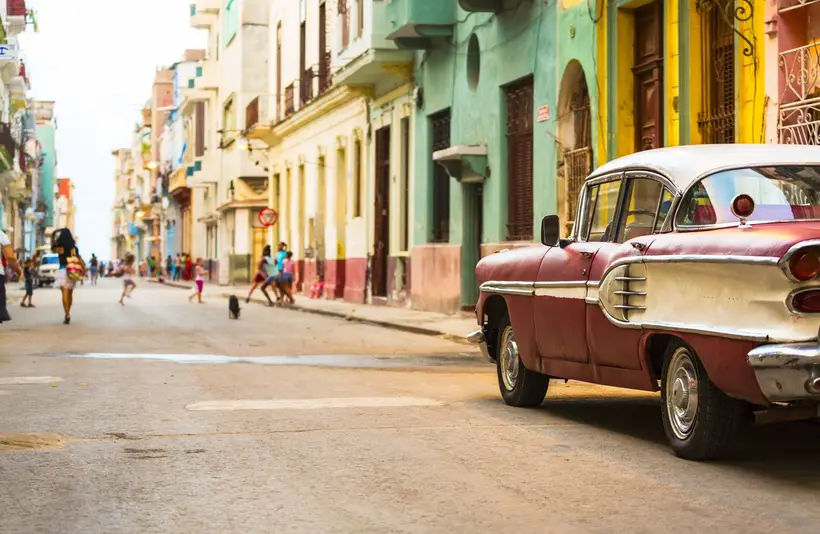
The Oldsmobiles of the 1950s, the colonial architecture of its facades, peacefully installed Cubans savoring a cigar and music on every street corner: Havana fulfills all the fantasies that one feeds while thinking of it! Its historic center, listed as a UNESCO heritage site , is full of architectural treasures, museums and churches that paint a picture-postcard setting. We will not fail to enter the magnificent San Cristobal cathedral , to reach the site of the statue of Christ to embrace the breathtaking view of the city, to rush into the galleries of Fort El Morro and to survey the immense Paseo del Prado to the famous Malecon where the habanerosmeet at sunset… If you are interested in Havana, we recommend our selection of 17 essential things to do in Havana !
2. Santiago de Cuba
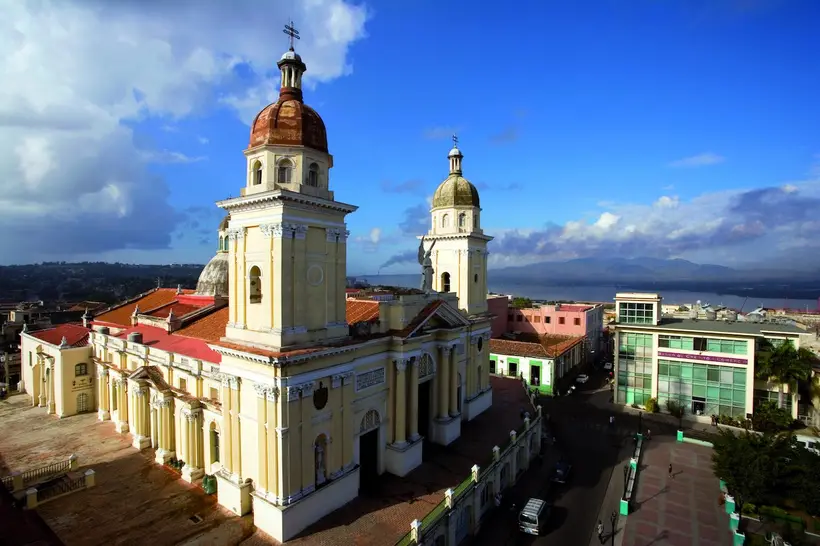
Second city of the country and cradle of the Cuban revolution, Santiago de Cuba is a pleasant city, nestled between the Caribbean Sea and the Sierra Maestra. The historic center offers beautiful visits around these large plazas : the cathedral of Nuestra Señora de la Asuncion, the house of the founder of the city Diego Velasquez, the Parque de Céspedes and the carnival, rum and underground wrestling museums … A short distance away is the Castillo del Morro, the best preserved castle in the Caribbean . But your most beautiful memories are those of its famous carnival and the omnipresent music in this city which vibrates to the rhythm of mambo, rumba and cha-cha-cha!
3. Trinidad

For many, Trinidad is the most beautiful city in Cuba , which is confirmed by its registration as a UNESCO World Heritage Site ! Time seems to stand still in its cobbled streets, lined with colorful facades that shape an outdated decor. Among other strolls, there are many sites to visit: palaces, churches and many museums including the charming Museo Romantico . What's more, the Trinidad region has some of the most beautiful beaches in Cuba, which unfold carpets of golden sand over dozens of kilometres.
4. Varadero
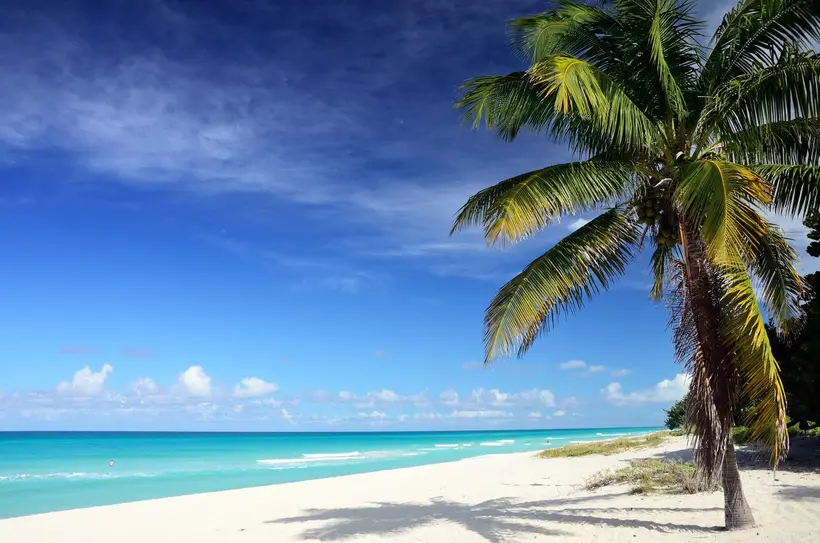
Varadero is the most important seaside resort in Cuba built on the edge of a 21 km beach in the paradisiacal setting of the Caribbean. It is the ideal destination for lazing around or enjoying the pleasures of the sea: here the water is turquoise and around 20°C. Diving, kite-surfing, catamaran, deep sea fishing: you can practice all water sports but also work on your swing on one of the country's two golf courses or have fun with its lively nightlife.
5. Cienfuegos
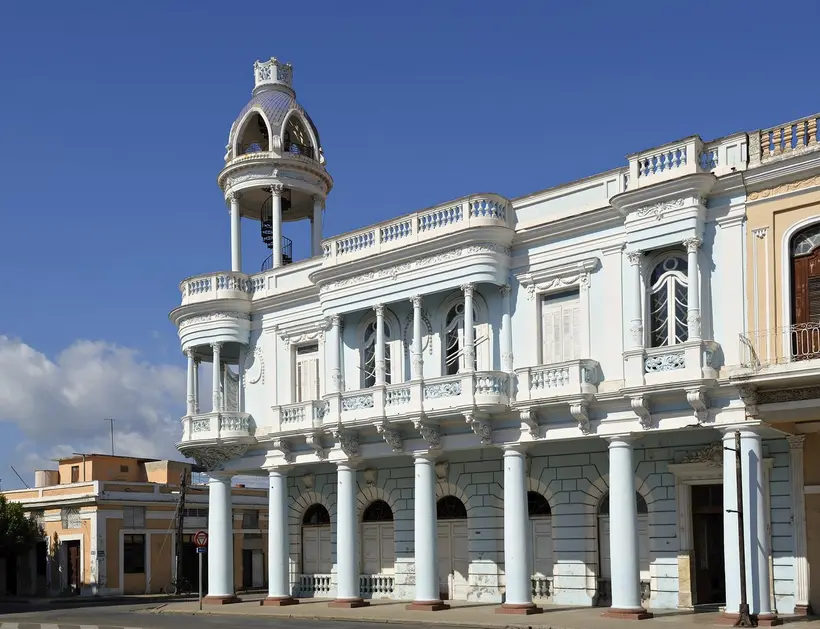
Nicknamed "the Pearl of the South" , Cienfuegos is reflected on the edge of the most beautiful natural bay in the country. Classified as a UNESCO heritage site, the historic center is absolutely beautiful with its neoclassical style buildings, its wide straight streets, its parks and its imposing buildings: the Founder's House, the Ferrer Palace, the Cathedral, the Tomás Theater Terry, the old San Lorenzo College, the Casino Español… The beaches, the Botanical Garden and the restaurants – among the best in the country – offer great alternatives to visits.
6. The Valley of Vinales

Known and recognized by cigar lovers, the Valley of Vinales in the province of Pinar del Rio produces one of the best tobaccos in the world : los puros . The landscape is partly sculpted by tobacco plants but also by sugar cane plantations and mogotes, karst reliefs inherited from the Jurassic period. We discover a rural Cuba, protected by its national park and listed as a UNESCO heritage site. Here the agricultural techniques remain traditional, life is simple, authentic and so are the inhabitants.
7. The Bay of Pigs
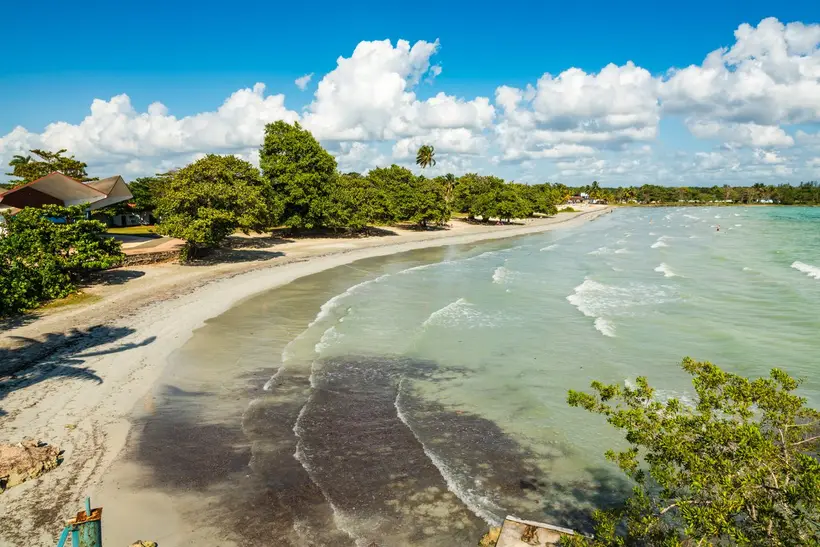
Sadly famous, the Bay of Pigs left in history the memories of the attempted invasion of the anti-Castros backed by the United States…. Today, it cultivates the attractions of Playa Giron and Playa Larga , two of the most beautiful beaches in Cuba. What's more, it preserves one of the country's most important ecosystems and the largest wetland reserve in the insular Caribbean.
8. Coco Key & Largo Key

Fine sandy beaches as far as the eye can see, translucent and sparkling waters under the sun, beautiful seabed: Cuba is also all this! Whoever dreams of paradisiacal landscapes will go to the island of Cayo Coco or that of Cayo Largo . The latter is entirely turned towards vacationing, it has luxurious seaside resorts at the foot of immense deserted beaches. You can also observe hundreds of turtles that have chosen its magnificent shores to nest in the summer.
9. Santa Clara

Known for having been the scene of Che Guevara's famous victory , Santa Clara is an important stopover for history buffs, especially that of the Cuban Revolution. His memorial was transformed to house the mausoleum “del Commandante” and his comrades; the adjoining museum reveals their personal effects, numerous photos and documents. You can also visit the armored train sent by Batista and foiled by Che's troops, its wagons have become a museum where objects recovered after this battle are exhibited.
10. Camaguëy

Listed as a UNESCO heritage site , Camaguëy has incredible charm with its winding streets, colonial residences and numerous small churches. Its historic center, among the best preserved, is an invitation to stroll, as is its farmers' market where you can immerse yourself in the heart of local life. It is certainly the most beautiful attraction of Camaguëy, it has remained authentic and preserved from mass tourism. During the visits, you will notice the many terracotta jars, the "tinajones", which have become the symbols of the city.
11. Baracoa
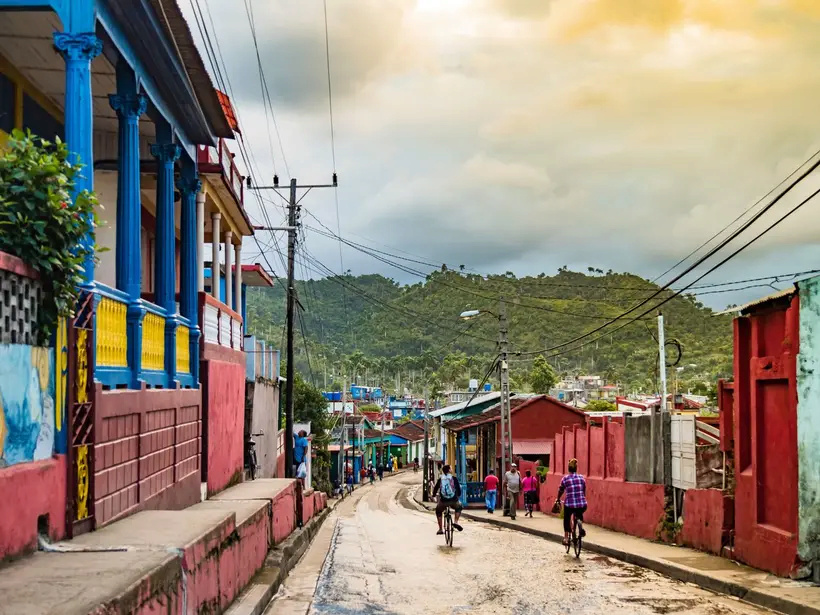
Located in the far east of Cuba, the charming town of Baracoa is a hidden treasure worth exploring. Surrounded by verdant mountains and tropical forests, this region offers travelers an authentic wilderness experience . Hiking enthusiasts will be delighted by the paths that wind through the landscapes, while history buffs will appreciate a visit to the Church of Nuestra Señora de la Asunción , one of the oldest in the country. Baracoa is also renowned for its delicious culinary specialties, including “Baracoa chocolate”, a savory delicacy that testifies to the rich cocoa history of the region.
12. The Malecon
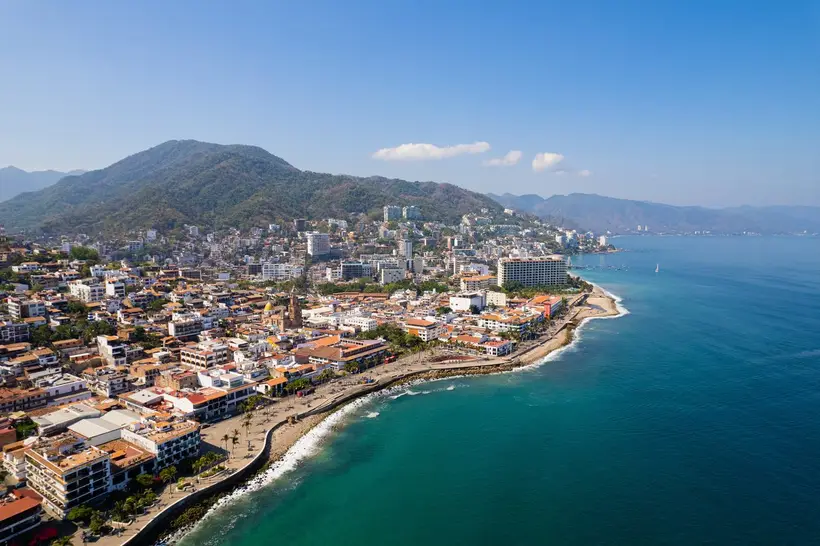
The Malecón , that iconic promenade along Havana's coastline, is more than just an avenue. It is a place of meeting, sharing and escapefor locals and travelers alike. As you stroll along its six kilometres, you will be lulled by the sea breeze and bathed in an atmosphere that is both nostalgic and lively. Day or night, the excitement reigns on the Malecón, where Cubans gather to relax, chat, play music and immerse themselves in an authentic Cuban experience. Take the time to sit on one of the benches watching the sun set over the horizon, and you will capture the very essence of Cuban life, warm and full of passion. The Malecón is a window into the soul of Cuba, an experience not to be missed during your stay in Havana.!
13. San Pedro de la Roca Fortress

Perched on a rocky promontory overlooking the Caribbean Sea, San Pedro de la Roca Fortress , also known as “El Morro,” is a historical treasure that bears witness to Cuba's tumultuous past. Built in the 17th century to defend the bay of Santiago de Cuba against pirates and foreign attacks, this fortress is a masterpiece of Spanish military architecture. Now listed as a UNESCO World Heritage Site , San Pedro de la Roca Fortress offers visitors stunning views of the ocean and surrounding mountains. Walking through its ramparts, you will be transported back in time, to past battles that shaped Cuba's history.Explore the casemates , cannons and underground galleries, and see fascinating exhibits about the lives of the soldiers and sailors who served in this strategic location. A detour to the San Pedro de la Roca Fortress is an unforgettable immersion in Cuba's military and maritime heritage, a journey through the ages in the heart of a breathtaking landscape.
14. El Nicho Waterfalls
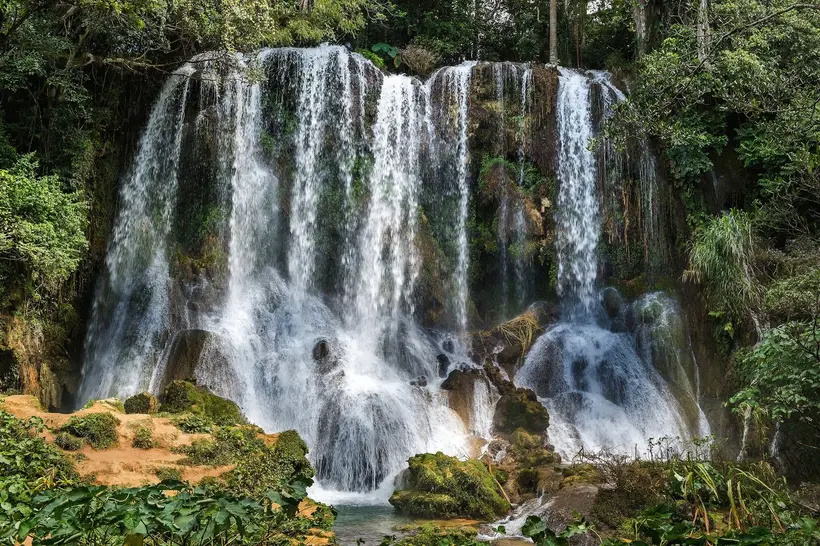
Nestled in the heart of the Sierra del Escambray , the El Nicho waterfalls are a refreshing escape into Cuba's lush nature. This place is an essential stopover for nature lovers in search of breathtaking landscapes.. Along well-maintained hiking trails, you will pass through dense and varied vegetation, where exotic species of plants and birds live in harmony. Arrived at your destination, you will be dazzled by the beauty of these emerald waterfalls hurtling down the cliffs and forming natural pools. You will also have the opportunity to swim in crystal clear water in a heavenly setting, offering a welcome moment of relaxation after your hike. Photography lovers will also be delighted by the richness of the panoramas offered by the El Nicho .
15. Isle of Youth
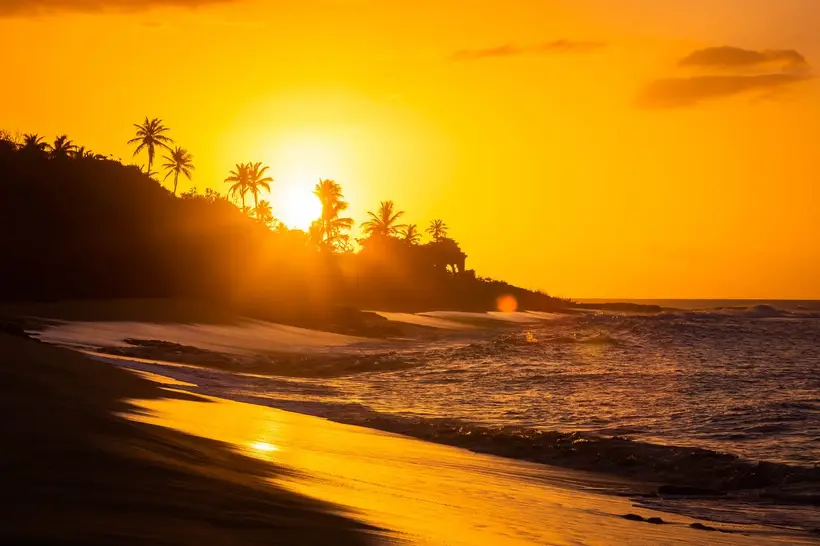
Located off the southwest coast of Cuba, the Isle of Youth is a haven of peace for travelers looking for authenticity and tranquility. Unlike the frenzy of big Cuban cities, this less touristy island sets an idyllic backdrop of pristine beaches, secluded coves and verdant forests. You can explore the unspoiled landscapes of the island on foot, by bike or even by scooter, discovering its secret corners and historical sites that are generally uncrowded. Don't miss the famous Cueva de Punta del Este, an impressive sea cave, and the Presidio Modelo, a former prison that housed Fidel Castro in the 1950s.
16. The Valley of Los Ingenios

Nestled in the province of Sancti Spíritus , the Los Ingenios Valley, a UNESCO World Heritage Site , is a living testimony to Cuba's sugar past. Once one of the most prosperous areas on the island thanks to the thriving sugar industry, this valley still holds the remains of the old plantations and sugar mills today. A visit to this valley is a unique opportunity to delve into the history of slavery and sugar exploitation in Cuba. You can climb to the top of the Manaca Iznaga tower, which offers stunning panoramic views of fields and mountains. Plus, the historic Los Ingenios Valley Railway, with its old steam trains, transports you to a bygone era.
17 . The Cathedral Square

In the heart of Havana's historic center , Plaza de la Catedral is an architectural and cultural gem that embodies the very essence of the Cuban soul. Surrounded by colonial buildings, this iconic square is dominated by the majestic Havana Cathedral, also known as the Cathedral of San Cristóbal. This Baroque work of art, with its richly carved facade, is a striking example of 18th - century religious architecture in Cuba. Wander around the square to admire the other historic buildings, including the Palacio del Marqués de Arcos and the Palacio de los Condes de Casa Bayona, which bear witness to the city's past grandeur. The Plaza de la Catedral is also a lively meeting place where you can sip a Cuban coffee in one of the many surrounding cafes while listening to local musicians play. A visit to this emblematic square will immerse you in the heart of Cuba's cultural and architectural heritage, where past and present intertwine to create this unique and captivating atmosphere.
?What is the most beautiful place in Cuba
Some consider Old Havana, with its colonial charm, cobbled streets and colorful buildings, to be one of the most beautiful places on the island. Others might fall in love with Varadero's beaches, with their white sand and crystal clear waters, which offer a heavenly setting for relaxation and water sports. The Viñales Valley, with its iconic mogotes and tobacco plantations, is often considered one of Cuba's most beloved landscapes. Similarly, Trinidad, a perfectly preserved colonial city, attracts visitors with its cobbled streets and colorful houses. Finally for nature lovers, the Cienaga de Zapata Biosphere Reserve and its mangroves, caves and lagoons offer fascinating ecosystems to explore.
?When is the best time to go to Cuba
- The dry season (November to April): This is the most popular time to visit Cuba because the weather is generally dry and pleasant. Temperatures are mild, with averages around 25 to 30°C. This is an ideal time to enjoy the beaches, scuba diving and outdoor activities. The months of December to February are often the busiest, especially by tourists from colder regions.
- The rainy season (May to October): During this period, Cuba experiences more frequent showers and sometimes tropical storms. September and October are generally the wettest and most hurricane-prone months. However, it is important to note that showers can be short and refreshing, and it is still possible to enjoy the trip despite the occasional rain. Accommodation and flight prices may be lower during this time, which may be attractive for travelers on a tighter budget.
?What circuit to do in Cuba
Cuba offers a wide variety of tours that will allow you to discover the different facets of the island. Here are some popular tour ideas in Cuba:
- Classic circuit from Havana to Trinidad: This circuit will allow you to discover the essentials of Cuba. You'll start in Havana, exploring the old town, the Malecón, and soaking up the bustling atmosphere of the capital. Then you will head to the Viñales Valley, famous for its mogotes and tobacco plantations. The tour then continues to Cienfuegos and Trinidad, two colonial cities full of charm and history. You can enjoy the beaches of Varadero before returning to Havana.
- Eastern Cuba Tour: This tour will take you to the east of Cuba, in less touristy but equally fascinating regions. You will visit Santiago de Cuba, birthplace of Cuban music and the revolution, as well as Baracoa, a charming city surrounded by mountains and tropical forests. You can also discover the Isle of Youth, with its isolated beaches and unspoiled nature.
- Western Cuba Tour: This tour will introduce you to western Cuba, less frequented by tourists but rich in history and natural beauty. You will visit cities like Matanzas, Cienfuegos and Santa Clara, which are full of architectural and cultural treasures. You can also explore the Cienaga de Zapata Biosphere Reserve and its unique wetland landscapes.
?What vaccines are needed to go to Cuba
Before traveling to Cuba, it is recommended to ensure that your vaccinations are up to date and to consult a healthcare professional for medical advice tailored to your personal situation. Here are the vaccinations generally recommended for travelers to Cuba: - Routine vaccinations: Make sure your routine vaccinations are up to date, especially for diphtheria, tetanus, whooping cough, polio, measles, mumps, rubella and influenza. - Hepatitis A: Vaccination against hepatitis A is strongly recommended for all travelers to Cuba, as this disease can be contracted by consuming contaminated water or food. - Hepatitis B :It is also recommended to get vaccinated against hepatitis B, especially if you plan to stay for a long time or engage in risky activities, such as medical treatment. - Typhoid: Vaccination against typhoid is advised, especially if you plan to eat at local places or travel to rural areas. - Yellow fever: If you are coming from a country where yellow fever is present, you will need to present a yellow fever vaccination certificate to enter Cuba. Vaccination against yellow fever is not mandatory for travelers coming from countries with no risk of transmission.
?What is the typical dish in Cuba
The most emblematic typical dish of Cuba is the ropa vieja . This traditional dish, whose name literally means “old rag” in Spanish, is a delicious stew of beef simmered with vegetables and spices. To prepare ropa vieja, beef is cooked in a fragrant broth with onions, garlic, peppers, tomatoes and spices such as cumin and bay leaf. Once the meat is tender, it is broken into thin strips, hence the name "ropa vieja", because it looks like shreds of old rags. This savory dish is often served with white rice, black beans and fried plantains. It is very popular with Cubans and travelers for its delicate flavor and bewitching aromas.
Source: websites

